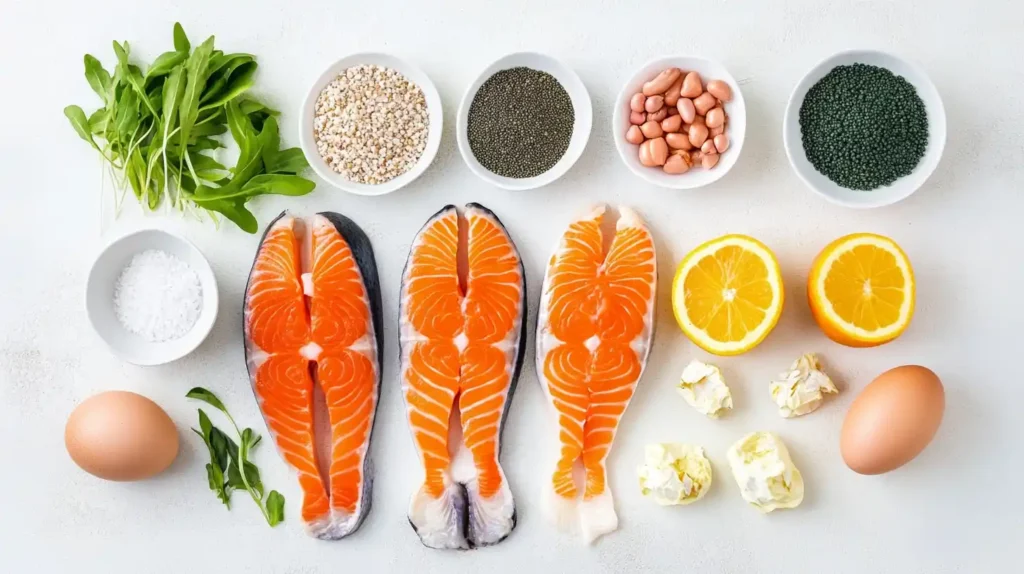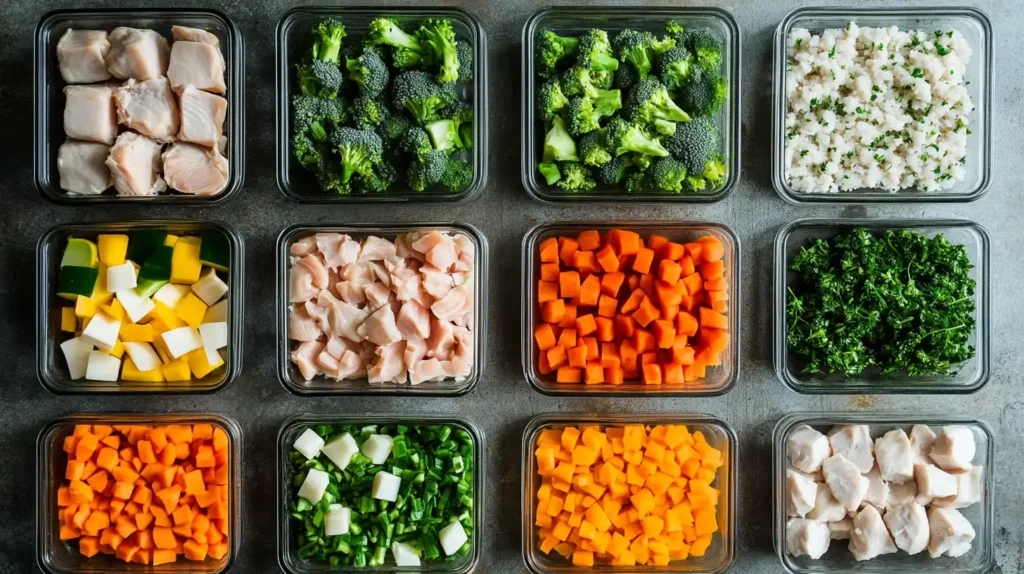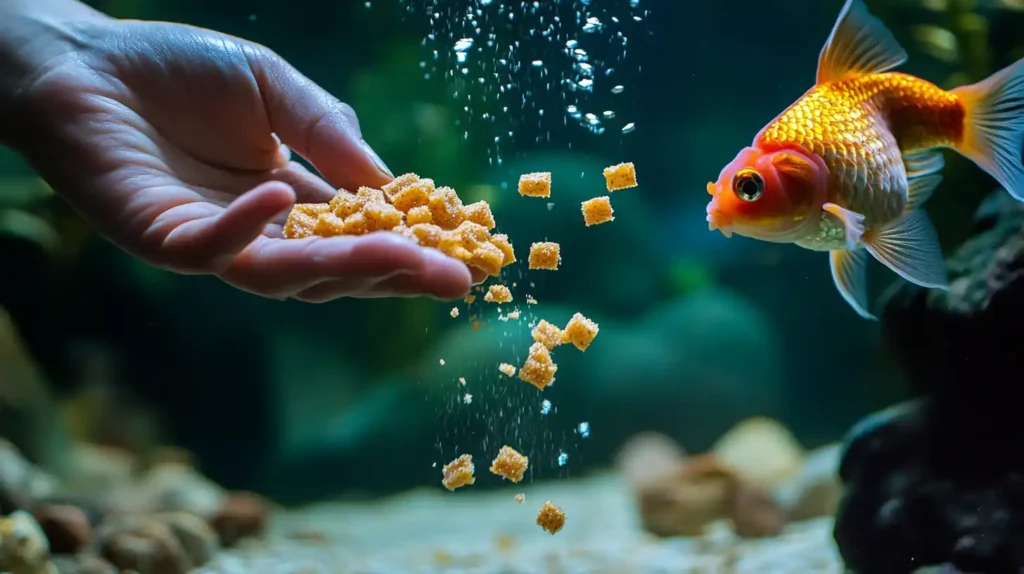Table of Contents
Introduction to Homemade Fish Food
Creating homemade fish food allows aquarium enthusiasts to have full control over the nutritional value and quality of the food provided to their aquatic pets. By using fresh ingredients, fish owners can cater to the specific dietary needs of their fish, promoting better health and longevity.
Why Choose Homemade Fish Food Over Store-Bought?
Homemade fish food offers several advantages over commercial options:
- Control Over Ingredients: Avoid harmful preservatives, fillers, and artificial additives commonly found in store-bought fish food.
- Cost-Effective: Preparing fish food at home can be more economical, especially for large aquariums.
- Tailored Nutrition: Homemade recipes allow customization to meet the unique dietary needs of specific fish species.
Benefits of Homemade Fish Food for Aquatic Health
Feeding fish a homemade diet can significantly enhance their overall well-being:
- Improved Health: Fresh, natural ingredients lead to stronger immune systems and healthier fish.
- Enhanced Colors: Nutrient-rich diets boost the vibrancy of fish colors.
- Better Water Quality: Homemade food reduces the risk of overfeeding and lessens waste, improving water quality in the tank.
Understanding the Nutritional Needs of Fish
Different fish species require varying nutritional compositions. Understanding these needs is crucial for creating balanced and effective homemade fish food.
Essential Nutrients for Freshwater and Saltwater Fish
Regardless of their habitat, all fish need a combination of the following nutrients:
- Proteins: Crucial for growth and repair, proteins are especially important for carnivorous species.
- Fats: Provide energy and support cellular functions. Omega-3 and Omega-6 fatty acids are vital.
- Carbohydrates: Limited amounts are required, mainly for herbivorous species.
- Vitamins and Minerals: Essential for overall health, immunity, and proper bodily functions.

Customizing Diets for Herbivorous, Carnivorous, and Omnivorous Fish
- Herbivorous Fish: Require plant-based ingredients like algae, spirulina, and vegetables (e.g., zucchini, spinach).
- Carnivorous Fish: Thrive on protein-rich foods such as shrimp, fish, and other seafood.
- Omnivorous Fish: Benefit from a balanced diet combining plant-based and protein sources.
Ingredients for Homemade Fish Food
Selecting the right ingredients is essential for creating a balanced and nutritious diet for your fish. A variety of components ensures that all their dietary needs are met, promoting health, growth, and vibrant colors.
Common Ingredients for a Balanced Diet
Homemade fish food should consist of a mix of plant-based ingredients, protein sources, and essential vitamins and minerals. This combination caters to different fish species and their dietary preferences.
Vegetables and Plant-Based Options
For herbivorous and omnivorous fish, plant-based ingredients are vital:
- Leafy Greens: Spinach, kale, and lettuce are rich in nutrients and easy to digest.
- Algae and Spirulina: Excellent sources of plant-based proteins and essential amino acids.
- Vegetables: Zucchini, peas, carrots, and cucumbers provide fiber and vitamins.
- Fruits: In small quantities, fruits like melon or apple can be used as treats.
Protein Sources: Shrimp, Fish, and Insects
Protein is critical for the growth and health of carnivorous and omnivorous fish:
- Shrimp: Fresh or frozen shrimp offer high-quality protein and are a favorite for many fish species.
- Fish: White fish like tilapia or cod can serve as a protein base in homemade recipes.
- Insects and Worms: Dried or fresh insects such as mealworms, bloodworms, and black soldier fly larvae are excellent for their protein and fat content.
- Eggs: Boiled egg yolk is a nutrient-dense option for fry (baby fish).
Vitamins and Minerals: Supplements and Natural Sources
To ensure fish receive all the nutrients they need, include:
- Natural Sources: Seaweed and algae for iodine and other trace minerals.
- Supplements: Add fish-safe vitamin supplements, such as Vitamin C and E, to homemade food for immunity and stress resistance.
- Calcium-Rich Ingredients: Crushed eggshells or cuttlebone can be used to provide calcium, essential for bone and fin development.
Combining these ingredients in the right proportions allows aquarists to craft a homemade diet tailored to the specific needs of their fish species. This not only improves fish health but also ensures better water quality by reducing waste from uneaten food.
Step-by-Step Recipes for Homemade Fish Food
Creating homemade fish food is a straightforward process that allows you to provide tailored nutrition to your aquatic pets. Below are step-by-step recipes for different dietary needs.
Basic Gelatin-Based Fish Food Recipe
This versatile recipe works for most fish and can be customized with various ingredients.
Ingredients:
- 1 cup of mixed vegetables (e.g., spinach, zucchini, carrots)
- 1 cup of protein source (e.g., shrimp, white fish)
- 1 packet of unflavored gelatin
- 1/2 cup water
Instructions:
- Steam or boil the vegetables until soft.
- Blend the vegetables and protein source into a smooth paste.
- Dissolve the gelatin in warm water according to the package instructions.
- Mix the blended ingredients with the dissolved gelatin thoroughly.
- Pour the mixture into a shallow tray and refrigerate until firm.
- Cut into small cubes and store in the freezer.
Protein-Enriched Fish Food Recipe
Designed for carnivorous and omnivorous fish, this recipe is packed with protein.
Ingredients:
- 1 cup of raw shrimp or fish
- 1/2 cup of insects or worms (e.g., bloodworms, mealworms)
- 1/4 cup of boiled egg yolk
- 1 packet of unflavored gelatin
Instructions:
- Blend the shrimp, fish, insects, and egg yolk into a smooth paste.
- Dissolve the gelatin in warm water.
- Combine the paste with the gelatin and mix well.
- Pour into a shallow tray and let it set in the refrigerator.
- Cut into bite-sized pieces and freeze for storage.
Vegetarian Fish Food Recipe
Perfect for herbivorous and omnivorous fish, this recipe emphasizes plant-based nutrition.
Ingredients:
- 1 cup of leafy greens (e.g., spinach, kale)
- 1/2 cup of algae or spirulina powder
- 1/2 cup of steamed peas or carrots
- 1 packet of unflavored gelatin
Instructions:
- Steam the vegetables until soft.
- Blend the vegetables and spirulina powder into a fine paste.
- Dissolve the gelatin in warm water.
- Mix the paste with the dissolved gelatin.
- Pour the mixture into a tray and refrigerate until firm.
- Slice into pieces and store in the freezer.
Baby Fish (Fry) Food Recipe
This recipe is tailored for fry, providing essential nutrients for rapid growth.
Ingredients:
- 1 boiled egg yolk
- 1/2 cup of cooked white fish
- 1/4 cup of spirulina powder
- 1/4 cup of powdered flakes or crushed pellets
Instructions:
- Mash the boiled egg yolk and cooked fish into a fine paste.
- Mix in the spirulina powder and crushed flakes until fully combined.
- Add a few drops of water to form a smooth consistency.
- Feed small amounts directly to the fry, and refrigerate any leftovers for up to two days.

Storage and Shelf Life of Homemade Fish Food
Proper storage is crucial for maintaining the quality and safety of homemade fish food. Knowing how to store it and recognizing signs of spoilage can ensure your fish always receive fresh and nutritious meals.
Best Practices for Storing Homemade Fish Food
- Refrigeration: Store homemade fish food in an airtight container in the refrigerator if you plan to use it within 1–2 weeks.
- Freezing: For longer storage, freeze the food in individual portions or small cubes. Homemade fish food can last up to 3 months in the freezer.
- Portion Control: Divide the food into single-use portions to avoid repeatedly thawing and refreezing, which can degrade quality.
- Labeling: Clearly label containers with the date of preparation to track freshness.
Identifying Spoiled Fish Food
Using spoiled food can harm your fish. Look out for these signs to determine if homemade fish food has gone bad:
- Foul Odor: Spoiled fish food emits an unpleasant smell.
- Mold Growth: Visible mold or discoloration indicates spoilage.
- Texture Changes: Slimy or overly dry textures are signs of degradation.
- Fish Behavior: If your fish refuse to eat the food or show signs of distress after eating, it might be spoiled.
Dispose of any food that shows signs of spoilage and clean the storage container thoroughly before reusing.
Feeding Guidelines for Homemade Fish Food
Feeding your fish the right amount at the right time is essential for their health and the tank’s cleanliness. Overfeeding can lead to poor water quality, while underfeeding can result in malnutrition.
How Much and How Often to Feed Your Fish
- Portion Size: Only feed what your fish can consume within 2–3 minutes to avoid overfeeding and water pollution.
- Frequency:
- Adult Fish: Feed 1–2 times a day.
- Juvenile Fish: Feed 3–4 times a day in smaller amounts.
- Fry: Feed 4–6 times daily with nutrient-rich food for growth.
- Species-Specific Needs: Research your fish species’ dietary habits to determine the best feeding schedule.
Adjusting Feeding Based on Fish Behavior and Health
- Observing Fish: Monitor how quickly fish eat their food and adjust portion sizes accordingly. Leftover food often indicates overfeeding.
- Health Monitoring: Look for changes in behavior, weight, or color. For example:
- Active Fish: May need slightly larger portions.
- Sluggish or Overweight Fish: Reduce portion sizes or frequency.
- Water Quality: Regularly test tank water. Poor water conditions might signal overfeeding or uneaten food decomposition.
By adhering to these storage and feeding guidelines, you can ensure your fish remain healthy and your tank’s environment stays clean and stable.

Tips for Transitioning Fish to Homemade Food
Introducing your fish to homemade food requires a thoughtful approach to ensure they accept the new diet and maintain their health during the transition period.
Gradual Transition Techniques
Switching to homemade fish food should be done gradually to avoid stress or digestive issues for your fish.
- Start Small: Begin by mixing a small amount of homemade food with their usual store-bought food. Gradually increase the proportion of homemade food over 1–2 weeks.
- Observe Preferences: Offer different types of homemade food to determine which ingredients or textures your fish prefer.
- Mimic Familiar Foods: Shape or prepare homemade food to resemble the texture and size of their regular diet (e.g., flakes, pellets, or cubes).
- Introduce During Peak Feeding Times: Feed the homemade food when fish are most active and hungry to encourage acceptance.
- Be Patient: Some fish may take longer to adapt. Consistency and patience are key.
Monitoring Fish Health During Transition
Keep a close eye on your fish to ensure the new diet is suitable and well-received.
- Behavioral Observation: Watch for signs of refusal or disinterest in the food. If fish consistently ignore the homemade food, reevaluate the recipe.
- Physical Health: Look for signs of improved or deteriorating health, such as vibrant colors, active behavior, or weight changes.
- Digestive Health: Monitor waste for changes in color, consistency, or frequency. Uneaten food or unusual waste may indicate digestive issues.
- Water Quality: Test the water regularly. Uneaten food can degrade and harm water quality, affecting fish health.
By transitioning gradually and monitoring closely, you can ensure your fish adjust comfortably to their new diet while reaping the benefits of fresh, homemade food.
Troubleshooting Common Issues
Transitioning to homemade fish food can sometimes present challenges. Understanding and addressing these issues ensures your fish remain healthy and happy.
Fish Refusing Homemade Food
If your fish are not eating the homemade food, consider these strategies to encourage acceptance:
- Check Ingredients: Ensure the food matches the dietary preferences of your fish (e.g., herbivorous, carnivorous, or omnivorous).
- Adjust Texture or Size: Make the food smaller or softer to mimic their usual diet. Some fish prefer bite-sized pieces or smoother textures.
- Enhance Flavor: Add attractants like garlic juice or fish oil, which can make the food more appealing.
- Offer Variety: Rotate between different recipes to keep your fish engaged and satisfied.
- Be Patient: Fish may take time to adjust. Gradually mix homemade food with their regular diet until they accept it.
If refusal persists, reassess the recipe or consult with an aquarist for guidance.
Overfeeding and Its Consequences
Overfeeding is a common issue that can lead to several problems for both fish and their environment:
Consequences:
- Poor Water Quality: Uneaten food decomposes, increasing ammonia and nitrite levels.
- Health Issues: Overfeeding can cause bloating, constipation, and other digestive problems in fish.
- Algae Growth: Excess nutrients from uneaten food can lead to algae blooms.
- Behavioral Changes: Fish may become lethargic or stressed due to the poor tank conditions caused by overfeeding.
Solutions:
- Feed Small Portions: Only give what your fish can consume within 2–3 minutes.
- Remove Uneaten Food: Use a net or siphon to clean out uneaten food immediately after feeding.
- Monitor Feeding Behavior: Adjust portion sizes based on how quickly the food is eaten.
- Schedule Fasting Days: Allow fish to fast 1–2 days a week to prevent overfeeding and promote digestion.
When crafting homemade fish food, it’s essential to focus on ingredients that provide balanced nutrition for your aquatic pets. For a complete understanding of healthy preparation techniques, you can explore this helpful guide on branzino recipe, which delves into sourcing and preparing fresh fish—a great base for your fish food. Additionally, those interested in more diverse cooking ideas might enjoy learning about the brookie recipe, perfect for creative enthusiasts who appreciate blending flavors. Finally, for pet owners keen on broader homemade culinary adventures, the perfect chocolate chip pancake recipe offers insights into measuring and mixing with precision.
Conclusion
Homemade fish food is a rewarding and practical way to provide your aquatic pets with a healthier and more personalized diet. By taking control of the ingredients and preparation process, you can ensure your fish receive optimal nutrition while also contributing to the overall well-being of your tank’s ecosystem.
Encouraging a Healthier Diet for Fish
Preparing fish food at home not only allows you to cater to the specific dietary needs of your fish, whether they are herbivorous, carnivorous, or omnivorous, but it also provides numerous additional benefits. For instance, by including fresh vegetables, high-quality protein sources, and essential vitamins, you can promote vibrant colors, enhanced growth, and stronger immune systems in your aquatic pets. Furthermore, homemade diets are free of artificial additives, offering a cleaner and more natural feeding option. As a result, your fish can enjoy a healthier and more tailored diet.
Benefits of Homemade Fish Food for Aquarists
For aquarists, crafting homemade fish food brings numerous advantages:
- Cost Savings: It is often more affordable than purchasing premium store-bought options.
- Environmental Benefits: Reducing reliance on packaged goods minimizes waste and promotes sustainability.
- Bonding with Your Pets: The effort and care put into making food can deepen your connection with your fish as you observe their health and happiness flourish.
By embracing homemade fish food, aquarists not only improve the quality of life for their fish but also enjoy the satisfaction of contributing to a thriving aquatic environment.

